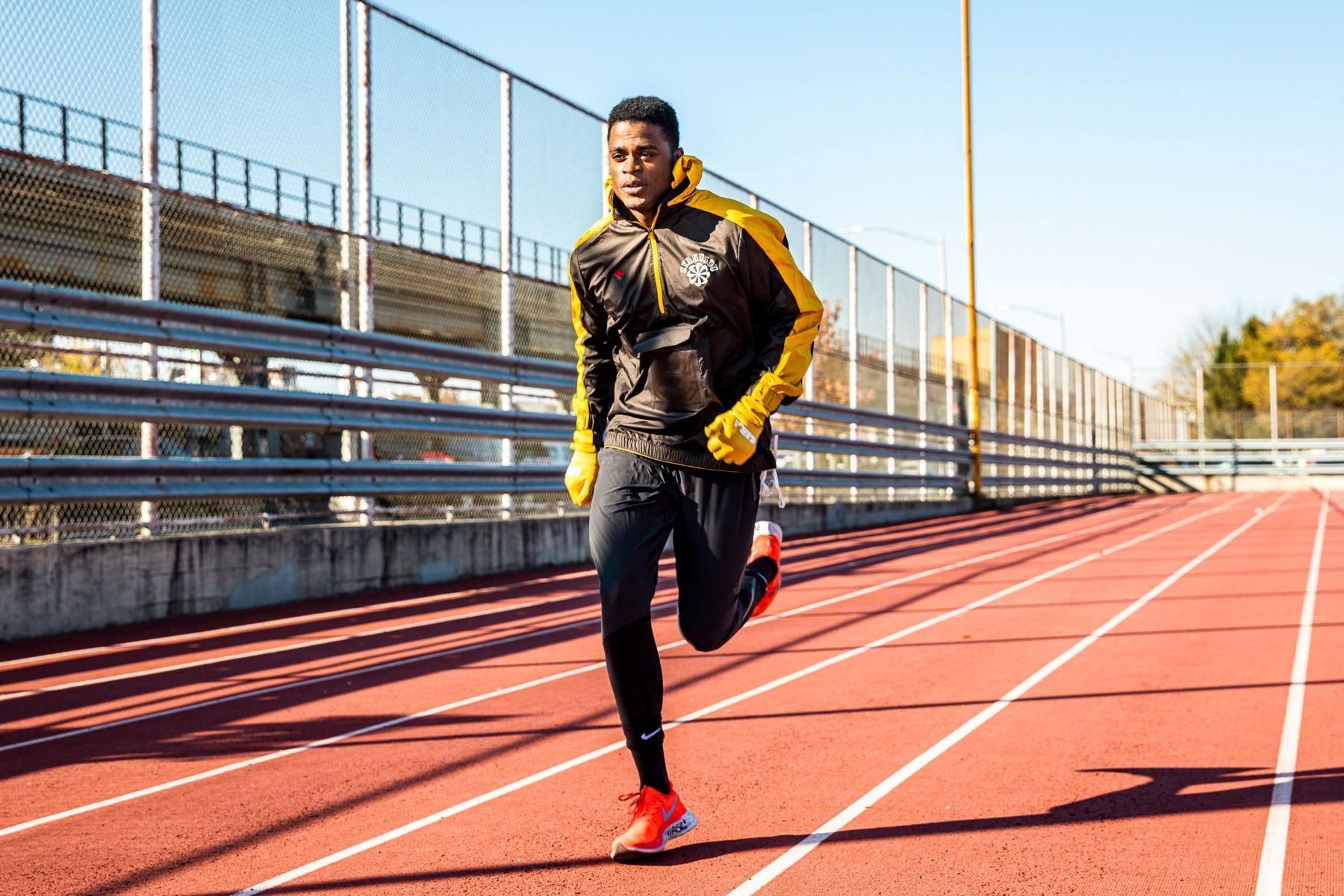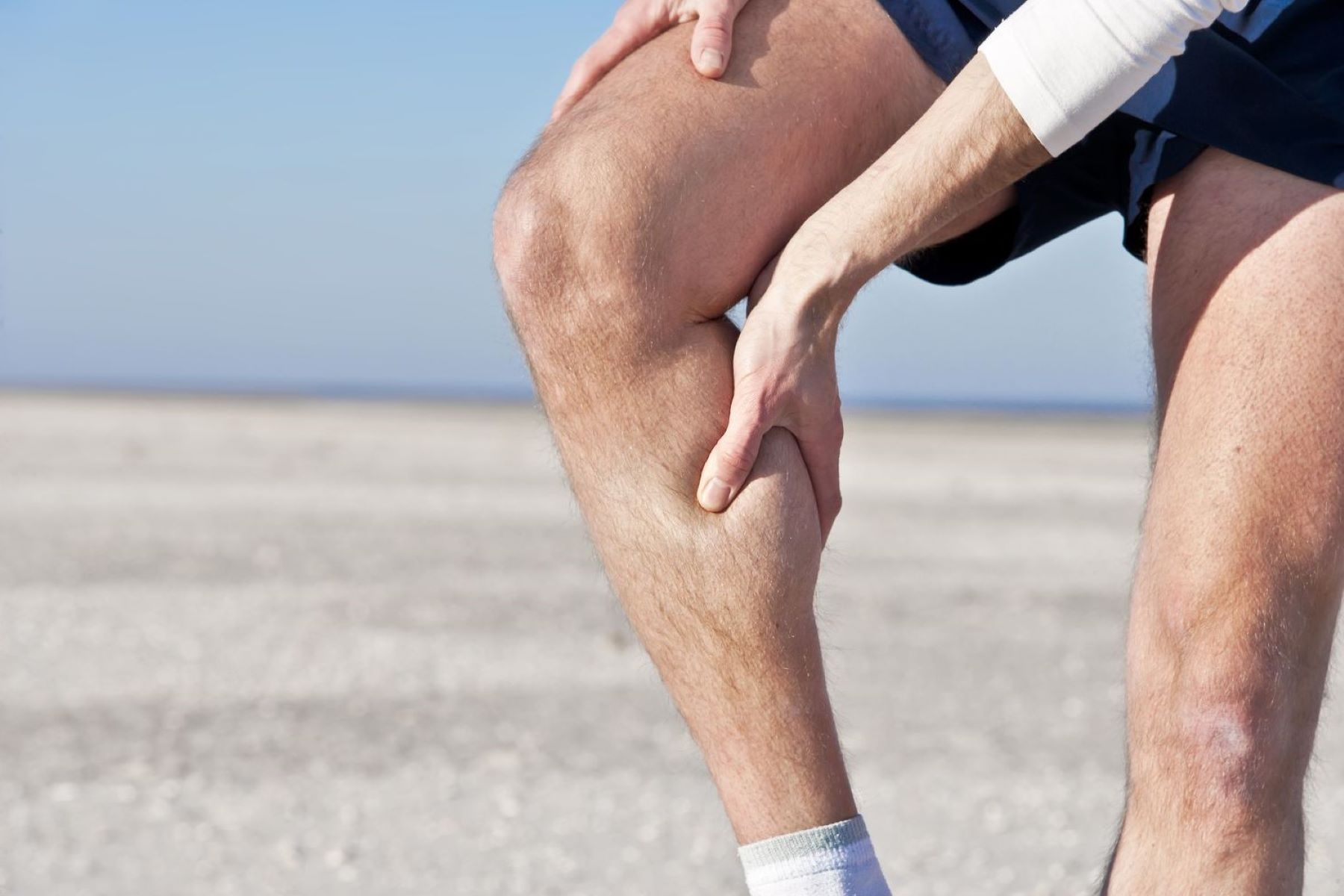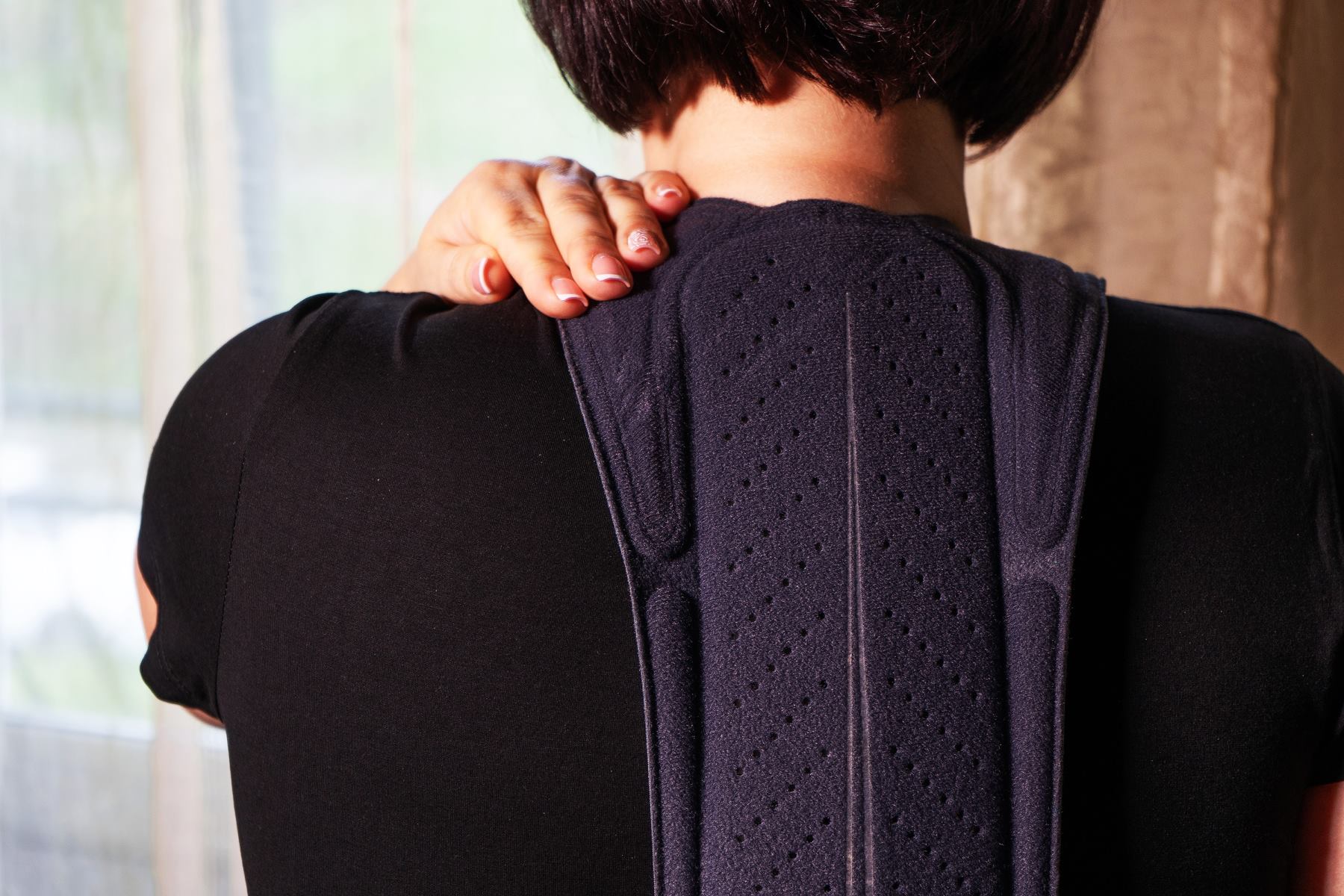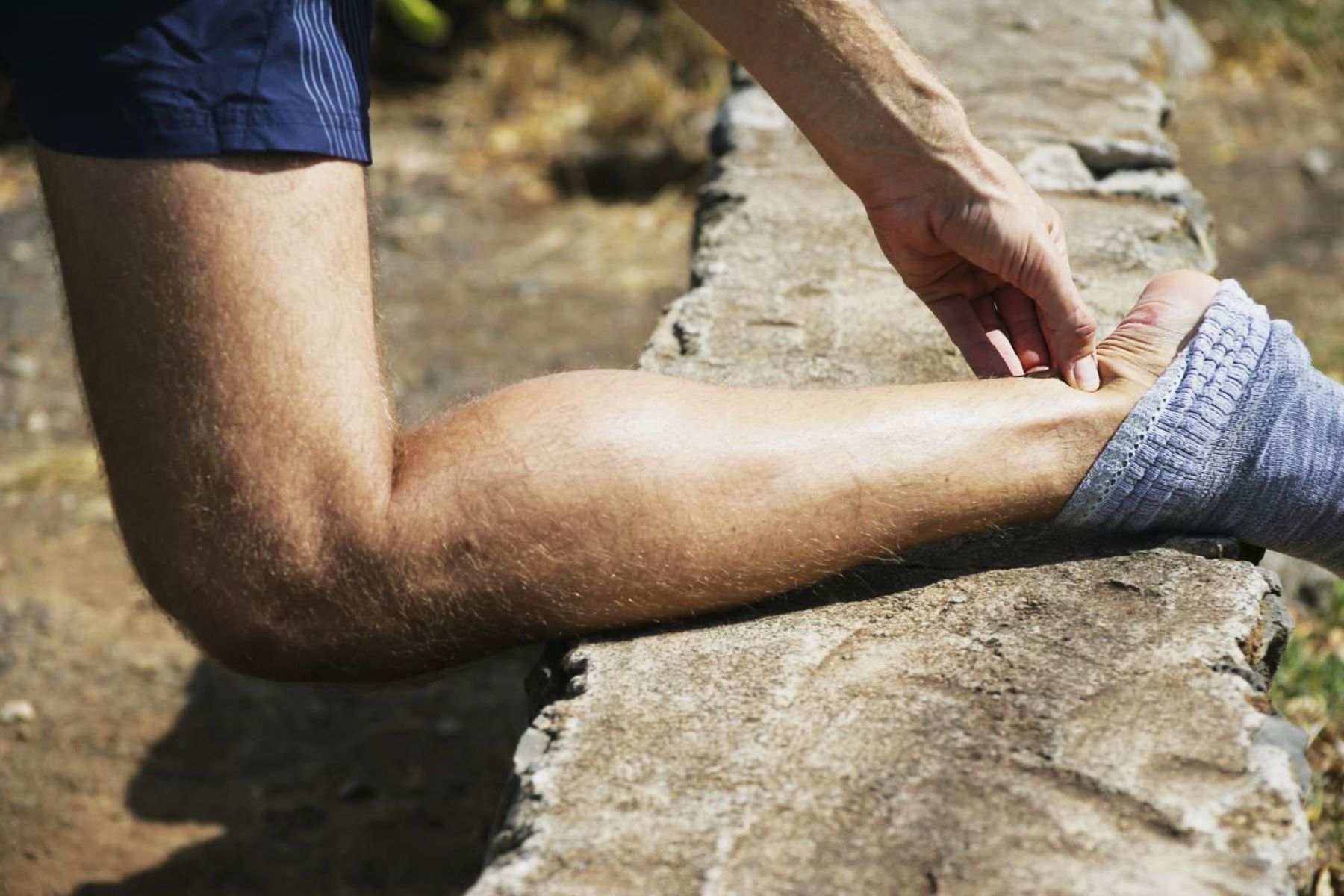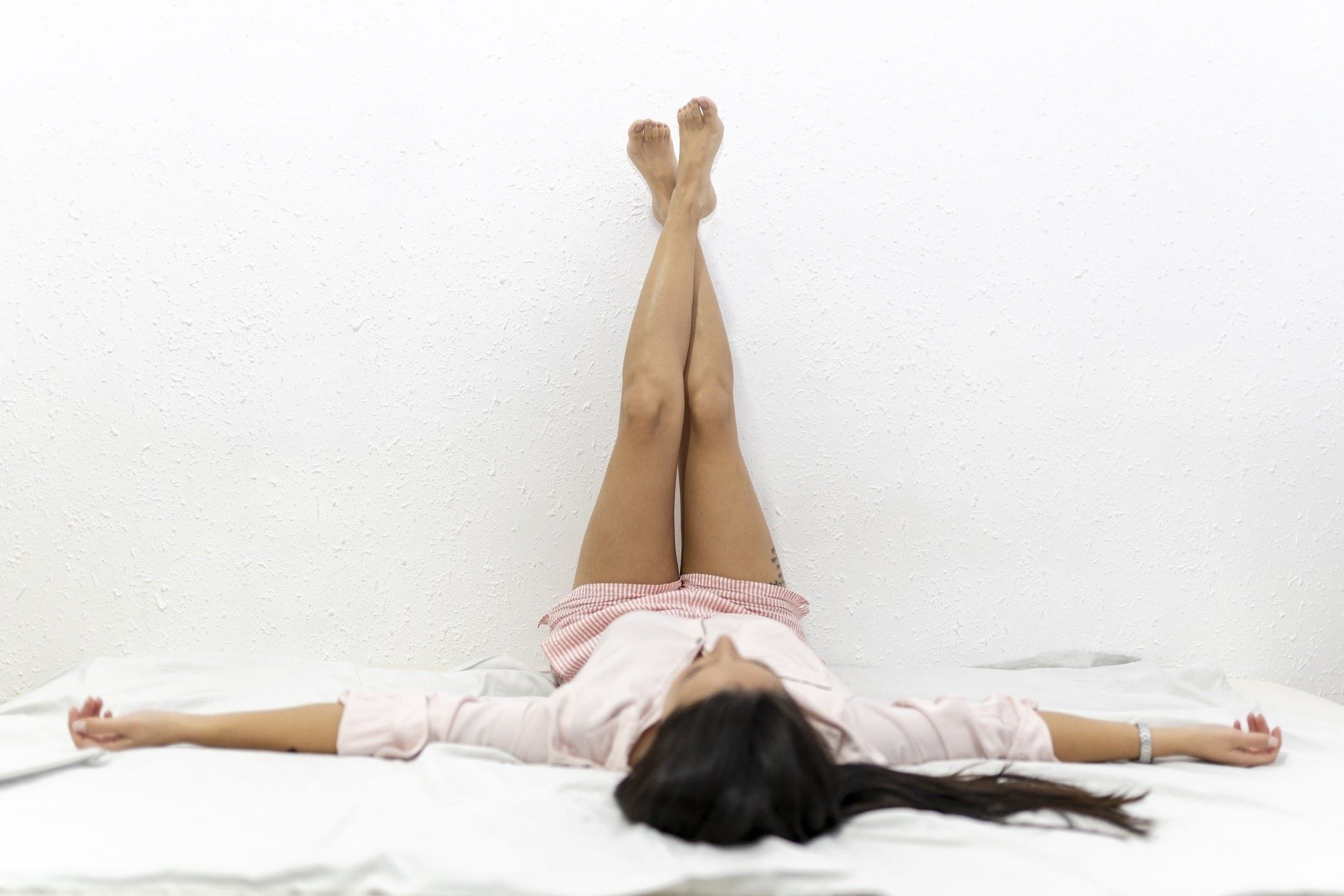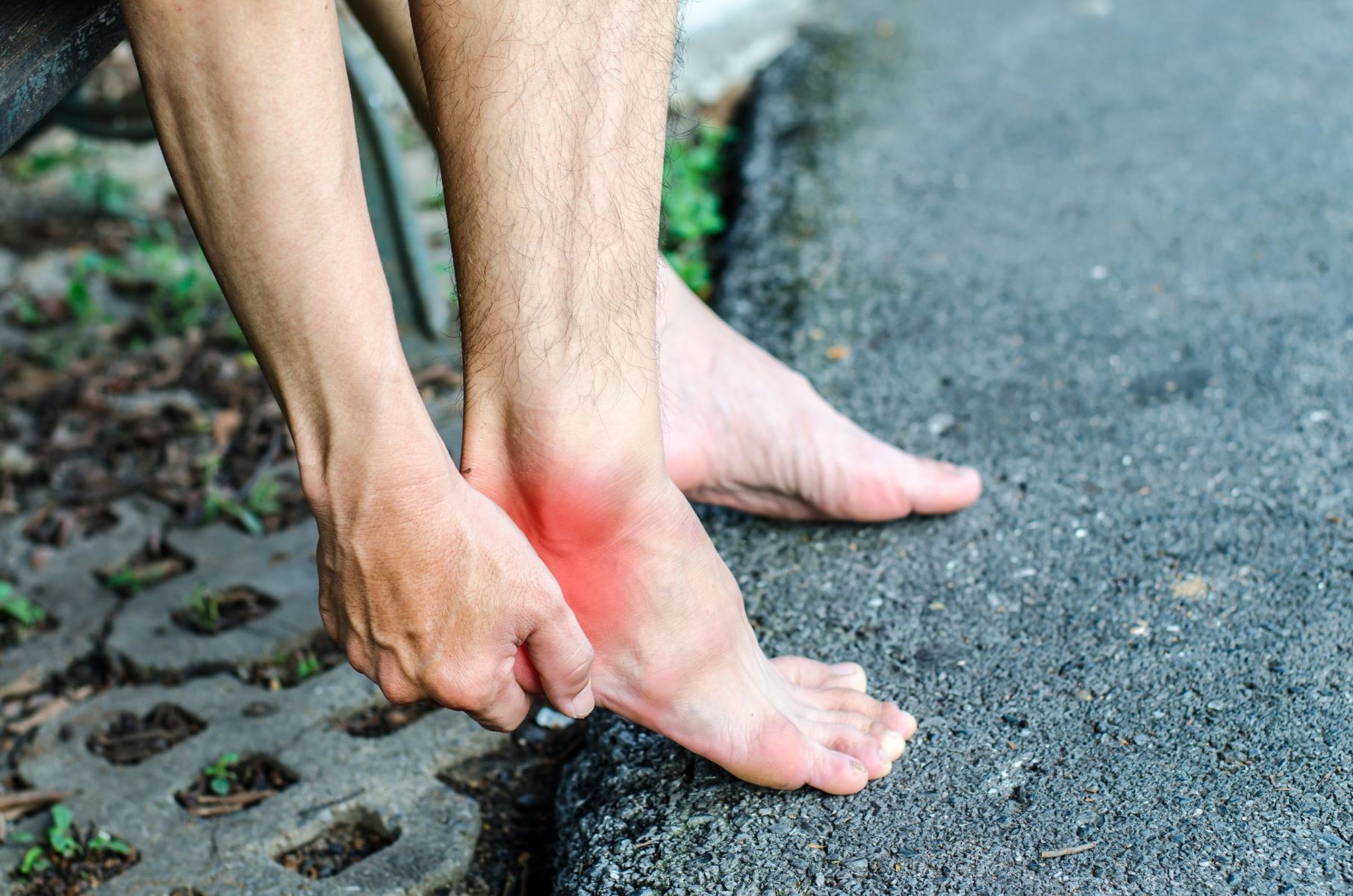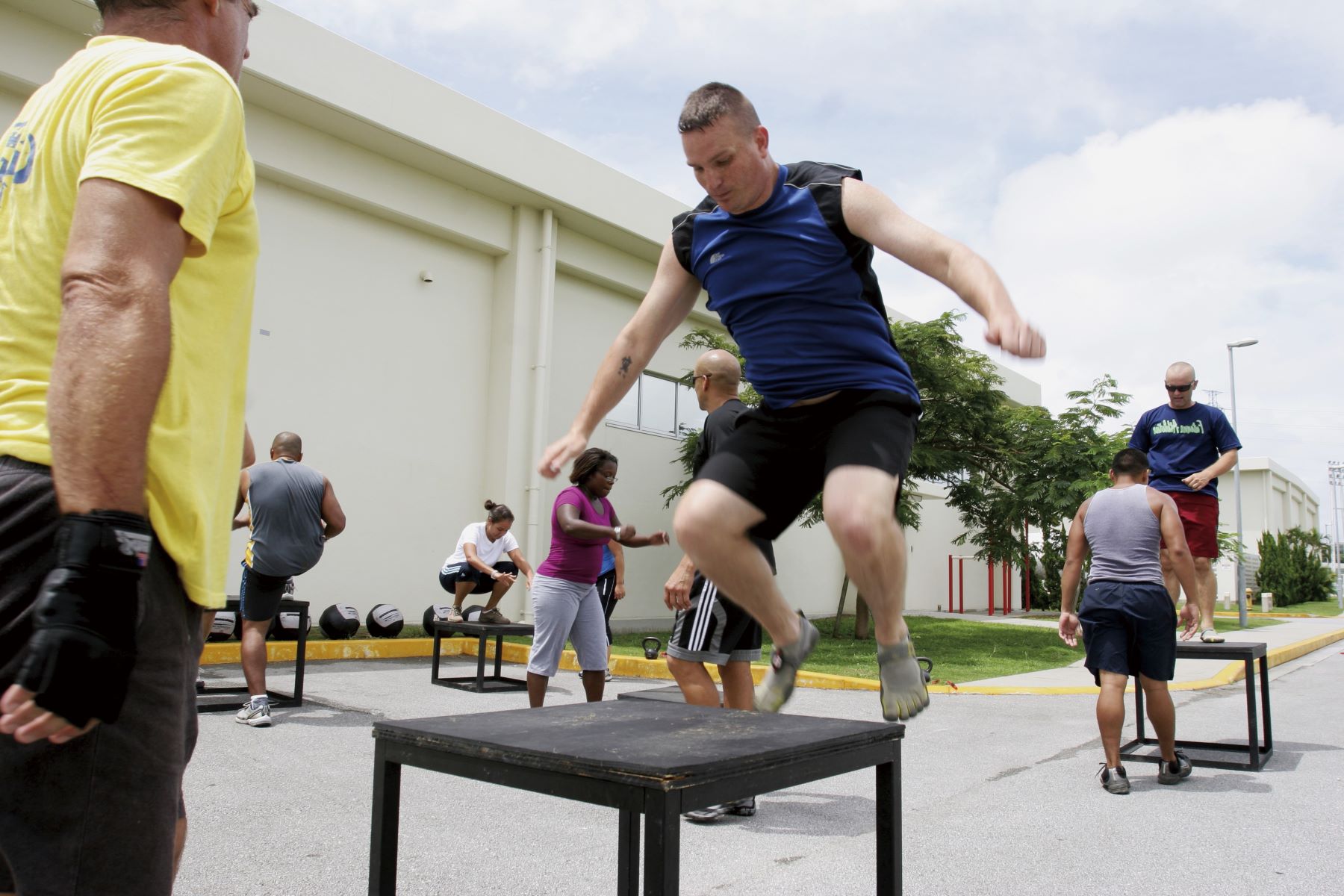Home>Health & Nutrition>Injury Prevention>Getting Back Into Running After An Achilles Tear
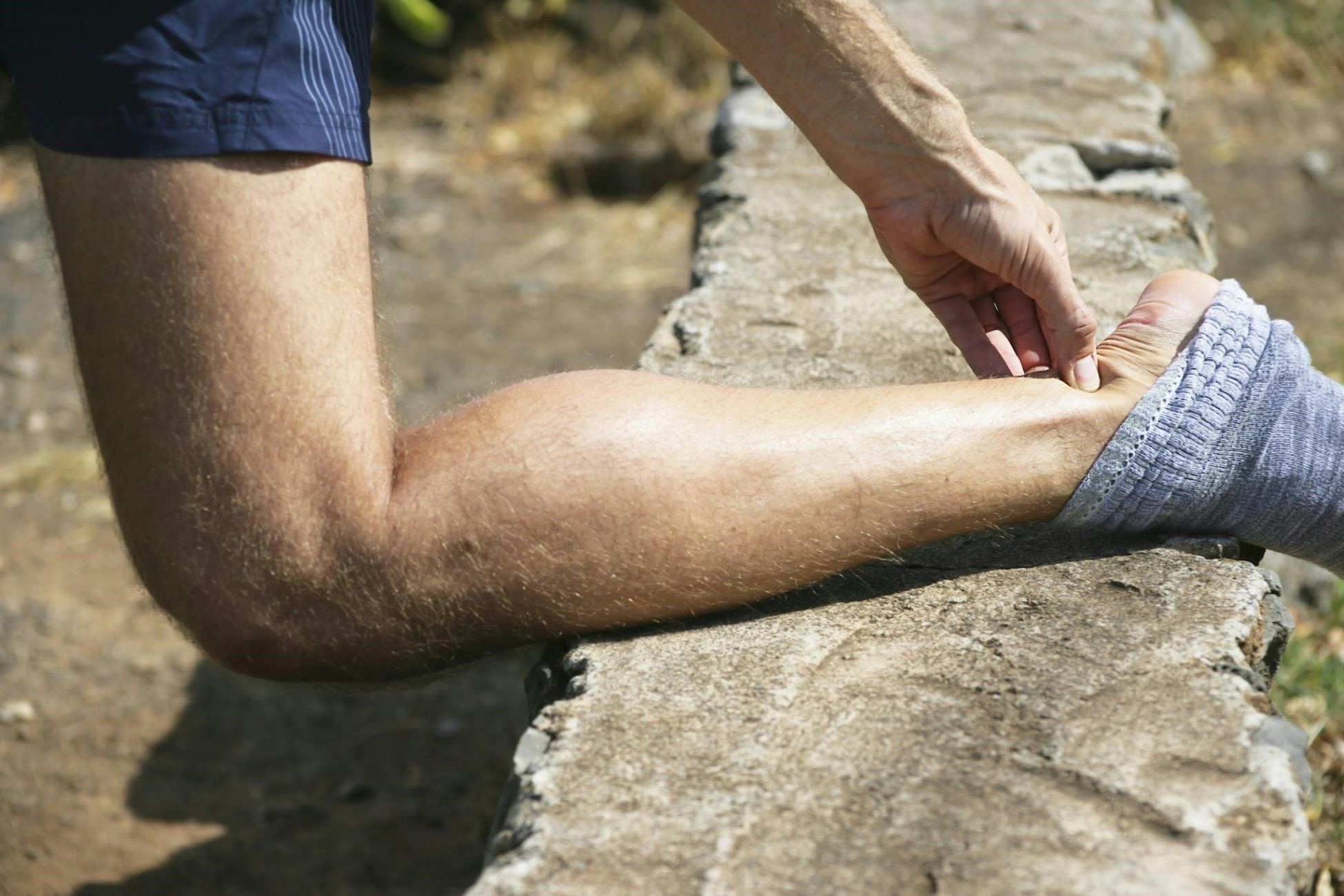

Injury Prevention
Getting Back Into Running After An Achilles Tear
Published: February 25, 2024
Discover effective injury prevention strategies to safely resume running after an Achilles tear. Learn how to gradually rebuild strength and avoid re-injury.
(Many of the links in this article redirect to a specific reviewed product. Your purchase of these products through affiliate links helps to generate commission for Therunningadvisor.com, at no extra cost. Learn more)
Table of Contents
Understanding the Achilles Tendon
The Achilles tendon, the largest and strongest tendon in the human body, plays a crucial role in facilitating movement. Named after the Greek hero Achilles, this tendon connects the calf muscles to the heel bone, allowing us to perform various activities such as walking, running, and jumping. Its significance in mobility cannot be overstated, making it essential to understand its structure and function.
The Achilles tendon is composed of tough, fibrous tissue that can withstand significant tension. It is divided into two parts: the gastrocnemius tendon, which originates from the inner part of the calf muscle, and the soleus tendon, which arises from the deeper, outer part of the calf muscle. These two components merge and attach to the heel bone, forming the Achilles tendon.
During physical activities, particularly those involving the lower extremities, the Achilles tendon is subjected to substantial stress. This stress can lead to overuse injuries, such as tendinitis or, in severe cases, a tear. Understanding the anatomy and biomechanics of the Achilles tendon is crucial for preventing and managing such injuries.
The blood supply to the Achilles tendon is relatively poor, which can impede its ability to heal efficiently. Additionally, the tendon's limited flexibility makes it susceptible to injury, especially when it is not properly conditioned or when sudden, excessive force is applied. These factors underscore the importance of implementing injury prevention strategies and adopting a gradual approach to physical activity, particularly after a period of inactivity.
By comprehending the structure and vulnerabilities of the Achilles tendon, individuals can make informed decisions about their exercise routines and take proactive measures to minimize the risk of injury. This knowledge also empowers them to recognize the warning signs of potential issues, enabling early intervention and appropriate treatment.
In essence, understanding the Achilles tendon is pivotal for safeguarding its health and optimizing its function. With this knowledge, individuals can embark on a journey of injury prevention and recovery, ensuring that they can continue to engage in physical activities with confidence and resilience.
Recovery Process and Timeline
Recovering from an Achilles tear is a multifaceted journey that demands patience, dedication, and a strategic approach. The process typically unfolds in distinct stages, each with its own set of challenges and milestones. Understanding the recovery timeline can provide individuals with a clear roadmap for their rehabilitation, enabling them to set realistic expectations and make informed decisions about their progress.
Phase 1: Immediate Post-Injury Period
The initial phase of Achilles tendon recovery is characterized by acute management and damage control. Upon sustaining an Achilles tear, it is crucial to seek prompt medical attention to assess the severity of the injury and determine the most appropriate course of action. Depending on the extent of the tear, individuals may undergo non-surgical treatments, such as immobilization in a cast or walking boot, or surgical intervention to repair the tendon.
Phase 2: Early Rehabilitation
Following the acute phase, the focus shifts to early rehabilitation, which aims to minimize pain and swelling, restore range of motion, and prevent muscle atrophy. This stage often involves physical therapy, gentle stretching exercises, and modalities such as ice therapy to alleviate discomfort and promote healing. As the tendon begins to heal, individuals gradually transition from passive to active movements, under the guidance of a healthcare professional.
Phase 3: Progressive Strength and Flexibility
As the Achilles tendon gains structural integrity, the rehabilitation process enters a phase of progressive strength and flexibility training. This stage emphasizes targeted exercises to improve calf muscle strength, enhance tendon flexibility, and promote functional mobility. Therapeutic modalities, including eccentric strengthening exercises and proprioceptive training, are commonly integrated into the rehabilitation program to optimize tissue healing and reduce the risk of re-injury.
Phase 4: Functional Rehabilitation
In the latter stages of recovery, the focus expands to functional rehabilitation, where individuals engage in activities that mimic real-world movements and demands. This phase aims to restore the individual's ability to perform daily tasks and, in the case of athletes, to regain sport-specific skills. Functional rehabilitation may involve agility drills, plyometric exercises, and gradual reintroduction to weight-bearing activities to recondition the tendon and improve overall physical performance.
Phase 5: Return to Activity
The final phase of Achilles tendon recovery involves the gradual return to regular physical activities, including running. This stage is characterized by a structured and progressive reintroduction to running, with an emphasis on monitoring symptoms, adjusting training intensity, and prioritizing proper biomechanics. It is essential for individuals to listen to their bodies, adhere to their healthcare provider's recommendations, and gradually increase their running volume and intensity to minimize the risk of re-injury.
Timeline
The recovery timeline for an Achilles tear can vary significantly based on the severity of the injury, the chosen treatment approach, and individual factors such as age and overall health. While some individuals may progress through the rehabilitation stages more swiftly, others may require a more extended recovery period to achieve optimal outcomes. On average, the complete recovery from an Achilles tear, including the gradual return to running, may span several months, with ongoing monitoring and adjustments to the rehabilitation plan as needed.
By understanding the comprehensive recovery process and timeline for an Achilles tear, individuals can approach their rehabilitation journey with informed perspectives and realistic expectations. This knowledge empowers them to actively participate in their recovery, collaborate effectively with healthcare professionals, and ultimately regain their strength, mobility, and confidence in returning to running and other physical activities.
Rehabilitation Exercises
Rehabilitation exercises play a pivotal role in the comprehensive recovery process for an Achilles tear. These exercises are strategically designed to promote tissue healing, restore strength and flexibility, and enhance functional mobility. By adhering to a structured rehabilitation program that incorporates targeted exercises, individuals can optimize their recovery and lay a solid foundation for a gradual return to running and other physical activities.
Early Stage Exercises
During the early stages of rehabilitation, the focus is on gentle movements and activities that facilitate tissue healing and prevent muscle atrophy. Passive range of motion exercises, such as ankle circles and gentle dorsiflexion and plantarflexion movements, are often initiated to maintain joint mobility and prevent stiffness. Additionally, isometric exercises, where individuals contract their calf muscles without joint movement, can help prevent excessive muscle loss and maintain neuromuscular function during the initial phase of recovery.
Strengthening and Flexibility Exercises
As the Achilles tendon progresses through the healing process, the rehabilitation program transitions to include progressive strengthening and flexibility exercises. Eccentric calf raises, a cornerstone of Achilles tendon rehabilitation, involve lowering the heel below the level of the step to eccentrically load the tendon, promoting tendon remodeling and strength development. Calf stretches, both with the knee straight and bent, are incorporated to enhance tendon flexibility and prevent the formation of adhesions.
Proprioceptive and Balance Training
Proprioceptive and balance exercises are integral components of Achilles tendon rehabilitation, as they help improve neuromuscular control and reduce the risk of re-injury. Balance exercises, such as single-leg stance and stability ball drills, challenge the body's proprioceptive system, enhancing ankle stability and promoting functional recovery. Proprioceptive training, which involves activities that challenge body awareness and control, can include exercises on unstable surfaces and dynamic movements to further enhance proprioception and lower limb stability.
Gait Retraining and Biomechanical Analysis
Gait retraining and biomechanical analysis are essential aspects of Achilles tendon rehabilitation, particularly as individuals prepare to resume running. Analyzing running mechanics and addressing any gait abnormalities or inefficiencies can help mitigate excessive stress on the Achilles tendon and reduce the risk of re-injury. By focusing on proper foot strike patterns, stride length, and overall running form, individuals can optimize their biomechanics and minimize the impact on the healing tendon during the gradual return to running.
Gradual Loading and Progressive Activity
Throughout the rehabilitation process, a gradual loading and progressive activity approach is emphasized to ensure that the Achilles tendon adapts to increasing demands without being overwhelmed. This involves systematically increasing the intensity and volume of exercises, such as calf raises and hopping drills, while closely monitoring symptoms and tissue response. By gradually exposing the tendon to controlled loads and functional movements, individuals can promote tissue resilience and prepare for the eventual return to running and higher-impact activities.
Individualized Approach
It is important to note that rehabilitation exercises should be tailored to the individual's specific needs, taking into account factors such as the severity of the Achilles tear, overall physical condition, and functional goals. A personalized approach to rehabilitation allows healthcare professionals to address the unique challenges and requirements of each individual, ensuring that the rehabilitation program is optimized for maximal effectiveness and safety.
By diligently adhering to a well-structured rehabilitation program that incorporates these essential exercises, individuals can expedite their recovery from an Achilles tear and lay the groundwork for a successful return to running and an active lifestyle. The strategic integration of rehabilitation exercises not only promotes physical healing but also fosters confidence, resilience, and a renewed sense of strength and mobility.
Gradual Return to Running Program
Embarking on a gradual return to running after an Achilles tear demands a meticulous and progressive approach that prioritizes tissue adaptation, biomechanical efficiency, and symptom monitoring. This phase of rehabilitation marks a significant milestone in the recovery journey, signifying the transition from injury management to the resumption of regular physical activities, particularly running. By adhering to a structured and gradual return to running program, individuals can mitigate the risk of re-injury, rebuild their running capacity, and regain confidence in their athletic pursuits.
Phase 1: Walking and Gait Analysis
The initial phase of the return to running program often involves walking and gait analysis to assess the individual's baseline functional capacity and identify any gait abnormalities or compensatory movements. Walking serves as a low-impact precursor to running, allowing individuals to gradually reintroduce weight-bearing activities while evaluating their gait mechanics. Gait analysis, conducted by healthcare professionals, provides valuable insights into the individual's running biomechanics, foot strike patterns, and overall gait efficiency, laying the groundwork for targeted interventions and adjustments.
Phase 2: Interval Training and Controlled Progression
Interval training, characterized by alternating periods of walking and light jogging, is a cornerstone of the gradual return to running program. This structured approach allows individuals to incrementally expose the healing Achilles tendon to controlled loads and impact forces, promoting tissue adaptation and resilience. By carefully regulating the duration and intensity of running intervals, individuals can gauge their tolerance, monitor for any signs of discomfort or excessive strain, and gradually increase their running volume as tolerated.
Phase 3: Biomechanical Optimization and Form Refinement
As individuals progress through the return to running program, emphasis is placed on biomechanical optimization and form refinement to minimize stress on the Achilles tendon and enhance running efficiency. Biomechanical interventions, such as adjusting foot strike patterns, optimizing stride length, and addressing any gait irregularities, can help reduce the mechanical load on the healing tendon and mitigate the risk of re-injury. Form refinement, guided by healthcare professionals, aims to promote proper running mechanics and ensure a smooth transition back to regular running activities.
Phase 4: Gradual Increase in Running Volume and Intensity
Throughout the return to running program, a gradual increase in running volume and intensity is carefully orchestrated to facilitate the individual's adaptation to higher impact and loading. This progressive approach involves incrementally extending running durations, incorporating varied terrains and inclines, and introducing speed and agility drills to challenge the healing tendon and enhance overall running proficiency. By systematically elevating the running demands, individuals can build endurance, strength, and confidence while closely monitoring their body's response to the escalating training stimuli.
Phase 5: Integration of Sport-Specific Activities
In the final phase of the return to running program, the integration of sport-specific activities and running-related drills prepares individuals for a seamless transition back to their athletic pursuits. This stage may involve engaging in running-specific exercises, such as sprint intervals, agility drills, and sport-specific movements, to simulate the demands of their chosen physical activities. By incorporating these targeted activities, individuals can refine their athletic skills, assess their readiness for full return to running, and gradually reintegrate into their preferred sports and recreational endeavors.
By meticulously adhering to a gradual return to running program that encompasses these essential phases, individuals can navigate the complexities of post-injury rehabilitation with confidence and purpose. This strategic approach not only facilitates the physical recovery from an Achilles tear but also fosters a renewed sense of resilience, determination, and joy in returning to the rhythmic cadence of running.
Preventing Future Injuries
Preventing future injuries is a paramount consideration for individuals who have experienced an Achilles tear, as well as for those seeking to safeguard the health and resilience of their Achilles tendon. By implementing proactive measures and adopting a comprehensive injury prevention approach, individuals can mitigate the risk of re-injury and optimize the long-term function and durability of their Achilles tendon.
Biomechanical Assessment and Correction
A crucial component of injury prevention involves conducting a thorough biomechanical assessment to identify any underlying factors that may predispose individuals to Achilles tendon injuries. Addressing issues such as foot pronation, muscle imbalances, and gait abnormalities through targeted interventions, orthotics, and corrective exercises can help optimize lower limb alignment and reduce excessive stress on the Achilles tendon during weight-bearing activities.
Strength and Flexibility Maintenance
Sustaining the strength and flexibility of the calf muscles and the Achilles tendon is fundamental for injury prevention. Engaging in regular strength training exercises, such as calf raises, eccentric loading, and resistance training, can fortify the tendon and surrounding musculature, enhancing its capacity to withstand mechanical loads and reducing the likelihood of overuse injuries. Additionally, prioritizing flexibility exercises, including calf stretches and dynamic mobility drills, can help maintain optimal tendon suppleness and prevent stiffness or tightness that may predispose individuals to injury.
Gradual Progression and Periodization
Adopting a gradual progression and periodization approach in training and physical activities is essential for preventing future Achilles tendon injuries. By incrementally increasing training intensity, duration, and volume, individuals allow their tendons to adapt to progressively higher demands, minimizing the risk of overloading and overuse. Implementing structured rest periods and recovery strategies within training regimens is equally vital, as it allows the tendon to recuperate and regenerate, reducing the likelihood of cumulative microtrauma and chronic tendon degeneration.
Footwear and Equipment Considerations
Selecting appropriate footwear and equipment can significantly influence the biomechanics and stress distribution on the Achilles tendon during physical activities. Individuals should opt for footwear that provides adequate support, cushioning, and stability, tailored to their specific foot type and gait mechanics. Furthermore, utilizing orthotic inserts or supportive braces, when indicated, can help optimize foot and ankle alignment, reducing excessive strain on the Achilles tendon and minimizing the risk of injury during athletic pursuits.
Cross-Training and Varied Activities
Incorporating cross-training and diverse physical activities into training routines can contribute to injury prevention by reducing repetitive stress on the Achilles tendon. Engaging in low-impact exercises, such as swimming, cycling, and yoga, alongside running or sports-specific training, allows individuals to maintain overall fitness while minimizing the constant strain on the Achilles tendon. This diversified approach not only promotes musculoskeletal balance and resilience but also mitigates the risk of overuse injuries associated with repetitive, high-impact activities.
Ongoing Monitoring and Self-Care
Vigilant monitoring of any signs of tendon discomfort, stiffness, or swelling is crucial for early detection of potential issues and prompt intervention. Individuals should prioritize self-care practices, including adequate warm-up and cool-down routines, proper hydration, and post-activity stretching, to optimize tendon health and reduce the likelihood of overuse injuries. Additionally, seeking regular assessments from healthcare professionals and promptly addressing any emerging concerns can aid in the proactive management of Achilles tendon health and injury prevention.
By embracing a holistic and proactive approach to injury prevention, individuals can fortify the resilience of their Achilles tendon and minimize the risk of future injuries. This comprehensive strategy not only safeguards the tendon's structural integrity but also empowers individuals to pursue their physical endeavors with confidence, vitality, and a reduced risk of debilitating setbacks.

